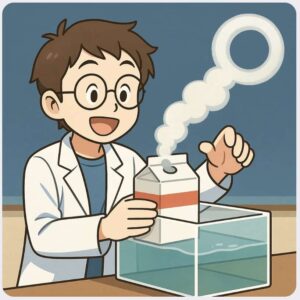Electrifying Everyone to Dance?! Recreating the Edo-Period Entertainment “Hyakunin Odoshi” (Static Electricity Experiment)
[speech_bubble type=”rtail” subtype=”L1″ icon=”5.png” name=”Dr. Ken”]I love static electricity! I’m Ken Kuwako, a science trainer.
Have You Heard of “Hyakunin Odoshi”?
Have you heard of “Hyakunin Odoshi”? First, please watch this video. This is #HyakuninOdoshi. Many of you may have done this in school.
What is Hyakunin Odoshi?In the Edo period, #GennaiHiraga created a device to generate static electricity called the “Elekiter.” After that, #SokichiHashimoto used this Elekiter to perform an experiment called “Hyakunin Odoshi.” Here is a document from that time.
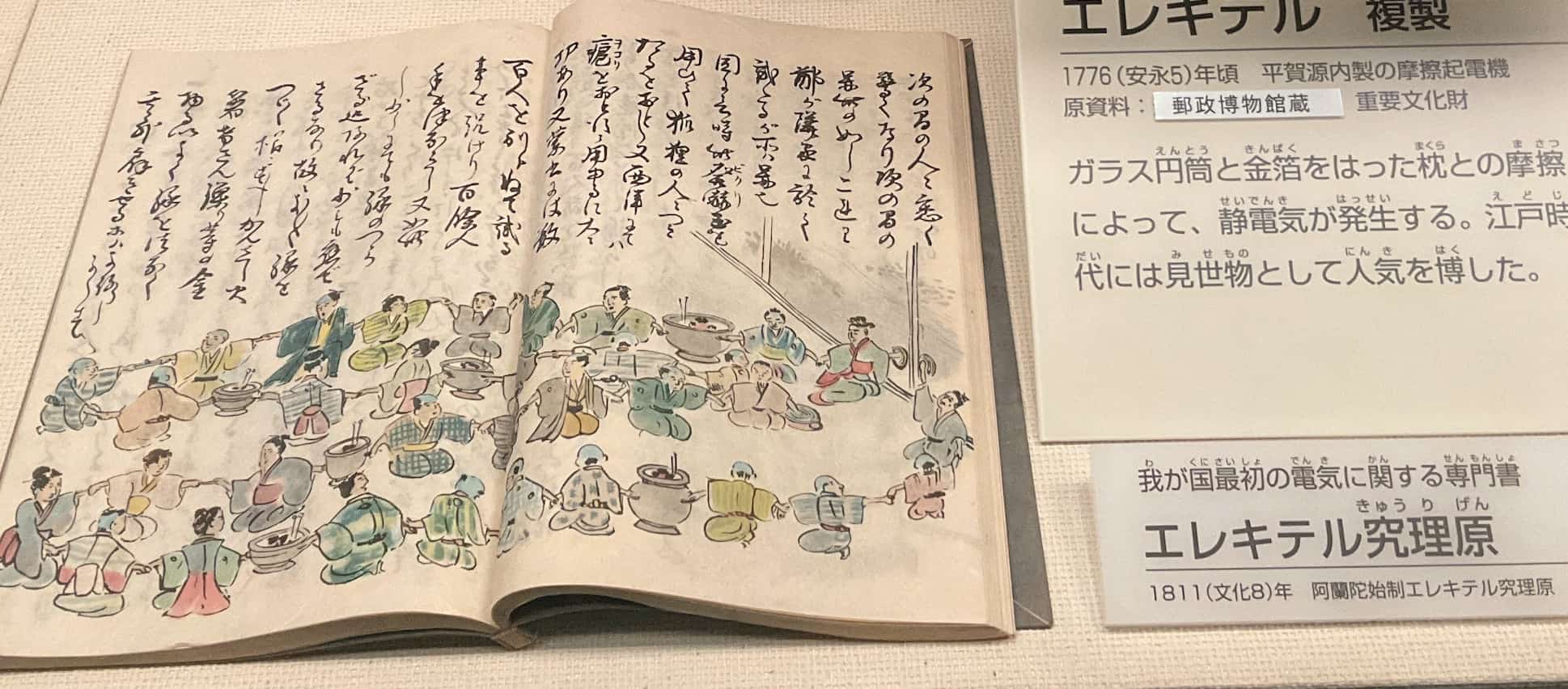
“Hyakunin Odoshi” is an experiment where people form a circle by holding hands and an electric current is passed through them. Although the name includes “hyakunin” (one hundred people), it doesn’t necessarily have to be a hundred people. The word “hyaku” can also mean “a large number of people,” so in our classes, we perform it with about 40 people.
In this article, I’ll introduce the method for the “Hyakunin Odoshi” experiment. I’ve even performed this experiment on a TV show with Suzu Hirose and Chocolate Planet’s Osada and Matsuo, and their reactions were priceless. Click here for more details.

Matsuo’s surprised reaction
Why was Hyakunin Odoshi Popular in the Edo Period?
Why did “Hyakunin Odoshi” become popular in Edo? In the Edo period, #GennaiHiraga created a device for generating static electricity called the Elekiter(wiki).
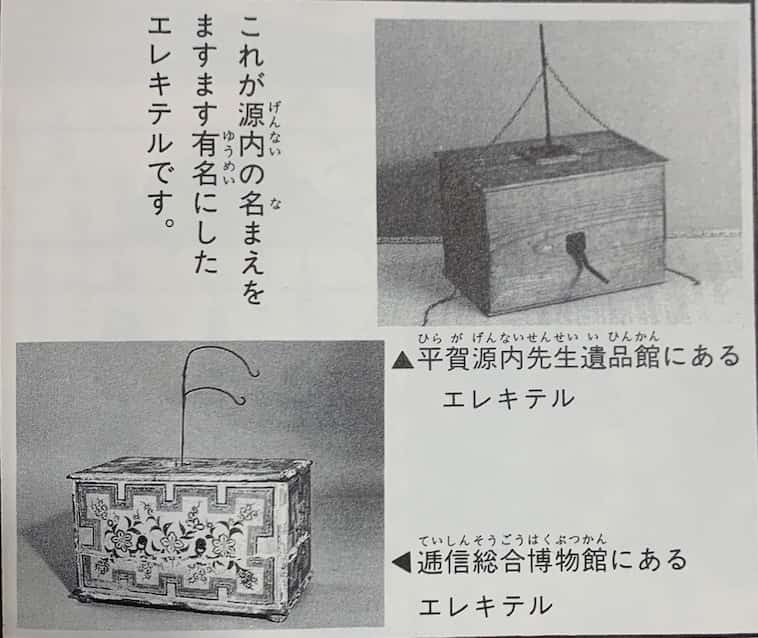
Quote from “Japanese Biographies: Gennai Hiraga” (Shueisha)
Using that Elekiter, #SokichiHashimoto performed an experiment called “Hyakunin Odoshi.”

Diagram from Sokichi Hashimoto’s “Oranda Shisei Elekiter Kyuri Gen”
Quote from “Otona no Kagaku Magazine vol22” (Gakken) P24,25
Some people might wonder, “Does electricity really flow through humans?” The truth is, it’s quite easy for electricity to flow through a human body. Check out this article.
However, there is almost no mention of static electricity in daily life in Edo-period documents (I asked a professor specializing in the Edo period about this). I believe this is because people at the time wore straw sandals (zori), which easily grounded electricity to the earth, preventing it from building up in their bodies.
In contrast, modern people wear rubber-soled shoes, which makes it easy for electricity to build up in our bodies. This is why we often get a “zap!” when we touch a doorknob. For the people of Edo, seeing and experiencing static electricity with the Elekiter and Hyakunin Odoshi was a form of extraordinary entertainment. Some even considered it to be “sorcery.”
While it’s not always performed with a hundred people, the number “hyaku” was likely used to mean “a large number of people.” In class, we perform it with around 40 people.
Let’s Make a “Leyden Jar” – Essential for Hyakunin Odoshi!
What is a Leyden Jar?
A Leyden Jar is a device that can store electrical charge. It was invented in 1746 by the scientist Pieter van Musschenbroek at Leiden University. Its mechanism is the same as a capacitor, with a structure that stores electricity between two opposing metal plates.
What You’ll Need
2 plastic cups, aluminum foil, and cellophane tape
Instructions
Place a cup on the aluminum foil, press down firmly, and roll the cup to make a mark. Then, cut along the mark with scissors.
Wrap the aluminum foil around the outside of one of the plastic cups. Make two of these.
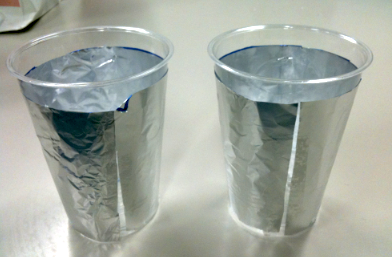

Cut a long, narrow strip of aluminum foil and attach it to one of the cups as shown in the diagram. It looks like a little tongue.
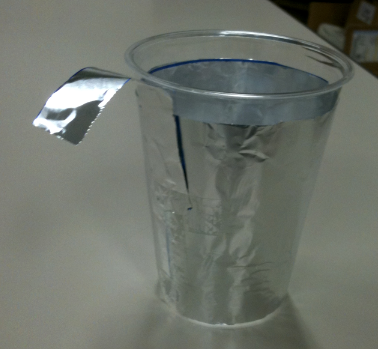
Insert the cup from step 3 (the one with the “tongue”) into the other cup, stacking them together. Now your Leyden Jar is complete!

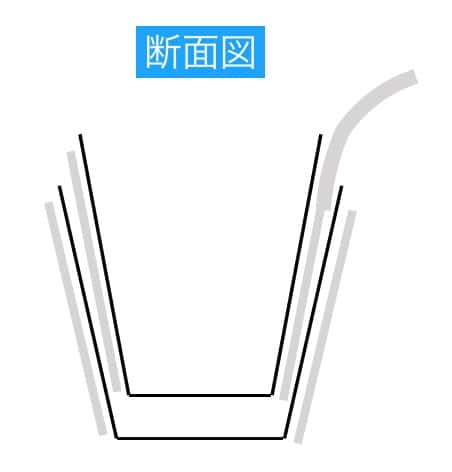
You may need to adjust the size depending on the season (this is related to how easily static electricity is generated).
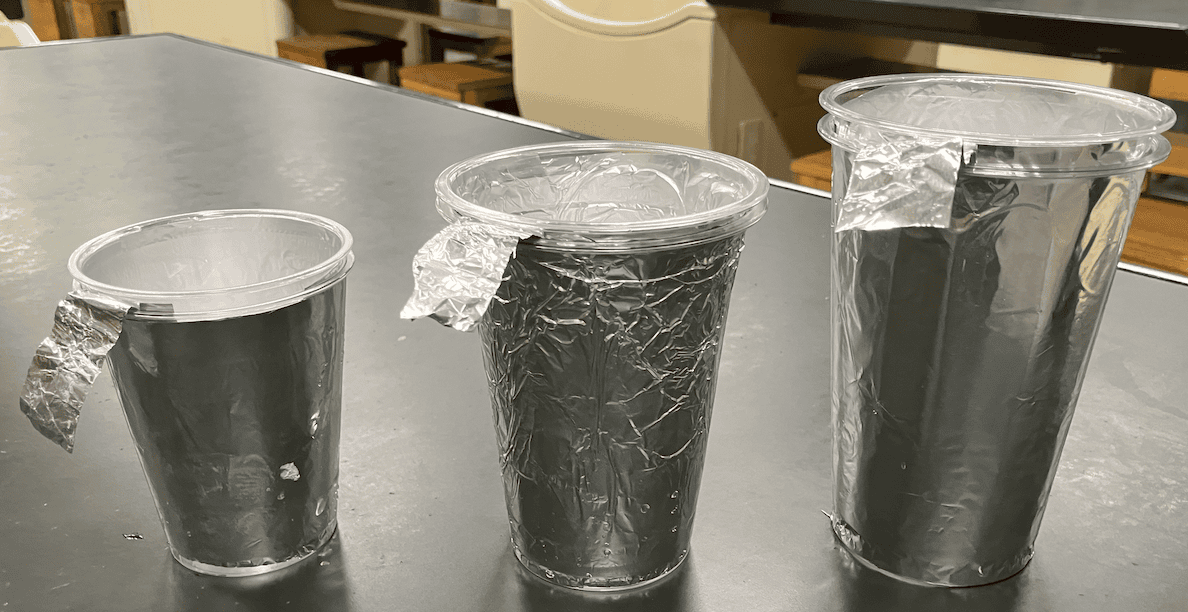
For safety, it’s best to perform the experiment a few times before a demonstration. If the temperature is very low and dry, use the Leyden Jar on the left. If you’re doing it during the rainy season when conditions are poor, use the one on the right (using a 550mL plastic cup purchased at Ministop on 2024/06/23).
By the way, you can also purchase Leyden Jars from the educational material company Narika.

How to Perform Hyakunin Odoshi and Its Mechanism
Generate static electricity by rubbing a plastic sheet or a balloon with silk (a rag will also work). Then, rub the Leyden Jar’s “tongue” with the charged object to store the static electricity.
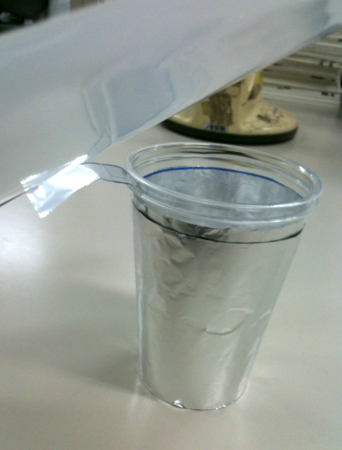
Rubbing the “tongue.”
At this point, the aluminum foil on the inner cup and the outer cup are not touching, so electricity accumulates in the inner cup. In the example above, the plastic sheet becomes negatively charged, so negative electricity accumulates in the inner cup. Doing this more than 10 times will ensure success. If you have a static electricity generator (Van de Graaff generator), you can charge it all at once. In that case, hold the cup and rub it against the #VanDeGraaff generator.
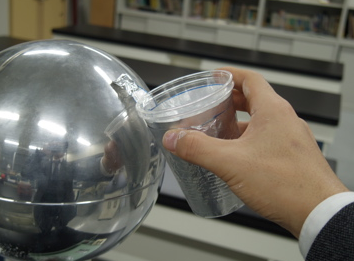
Charging with a Van de Graaff generator.
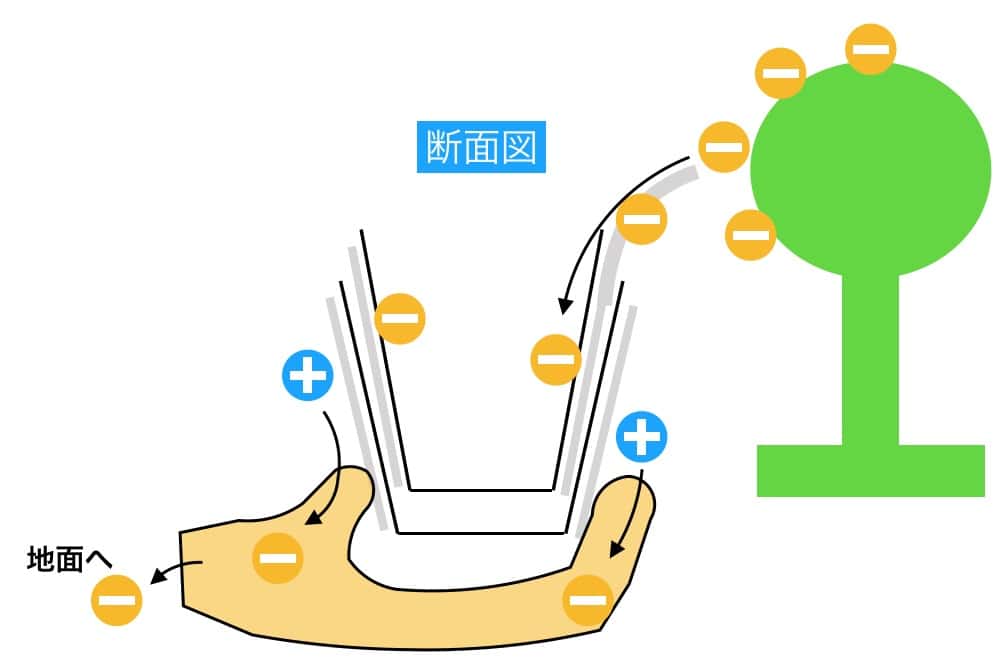
Through the aluminum foil “tongue” on the inner cup, electrons move, and negative charge accumulates inside. At the same time, electrons from the outer cup escape to the ground, resulting in a net positive charge. This creates a state where negative and positive charges are facing each other.
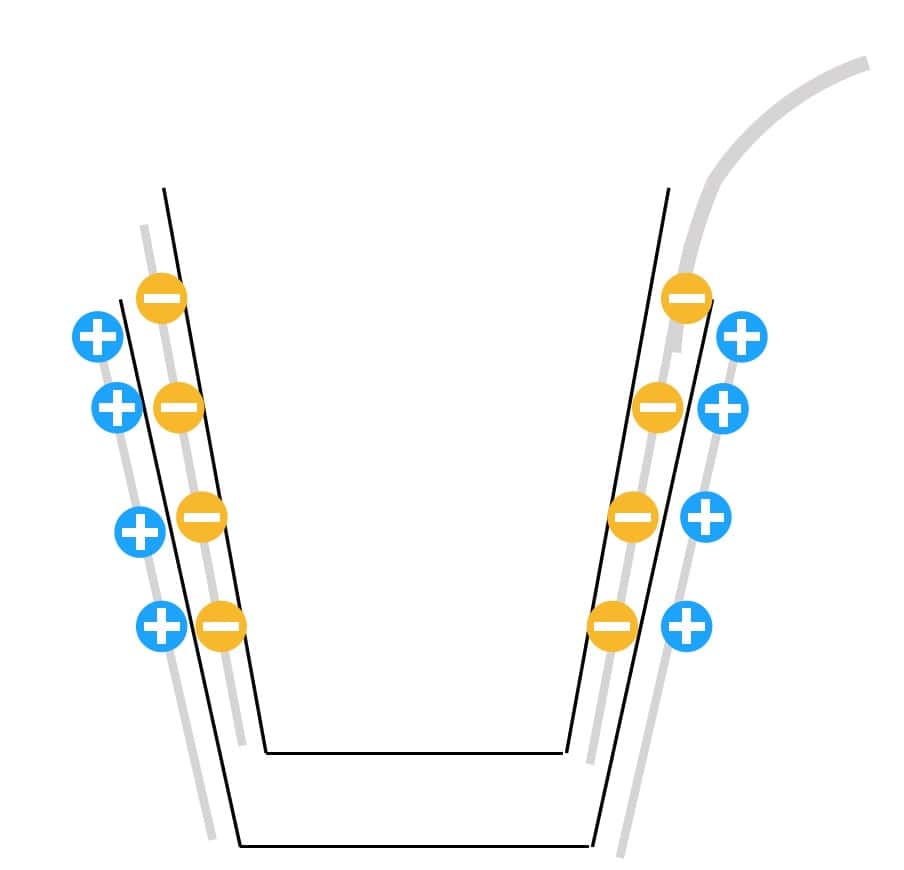
In other words, think of it as a small capacitor.
Once ready, have friends hold hands to form a small circle. The person at the front holds the outside of the cup, and the person at the end gently touches the aluminum foil “tongue.”
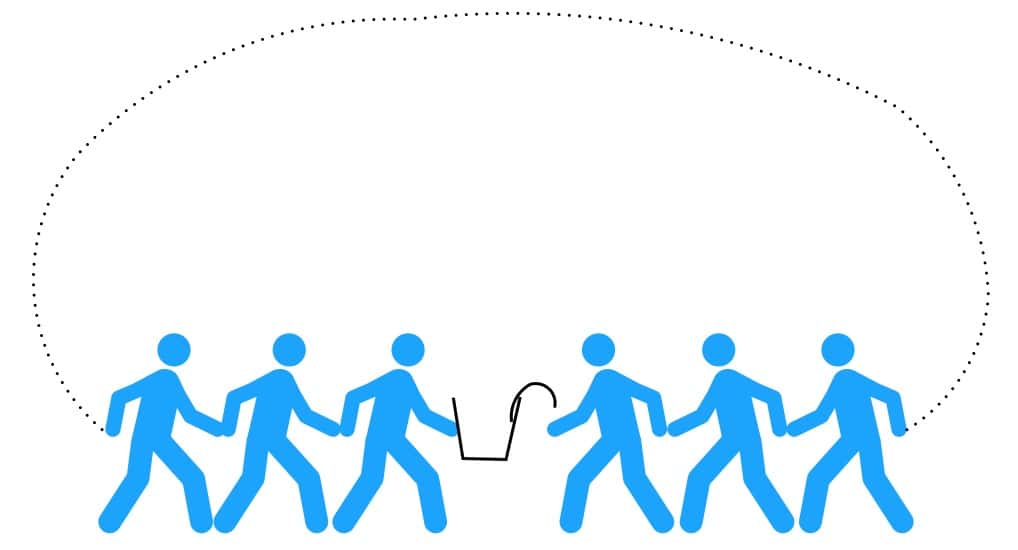
The moment they touch it, the negative charge accumulated in the inner cup flows through the hands of everyone in the circle to the outer cup. This sends an electric current through everyone, causing their muscles to contract and their bodies to “jump!” in unison.
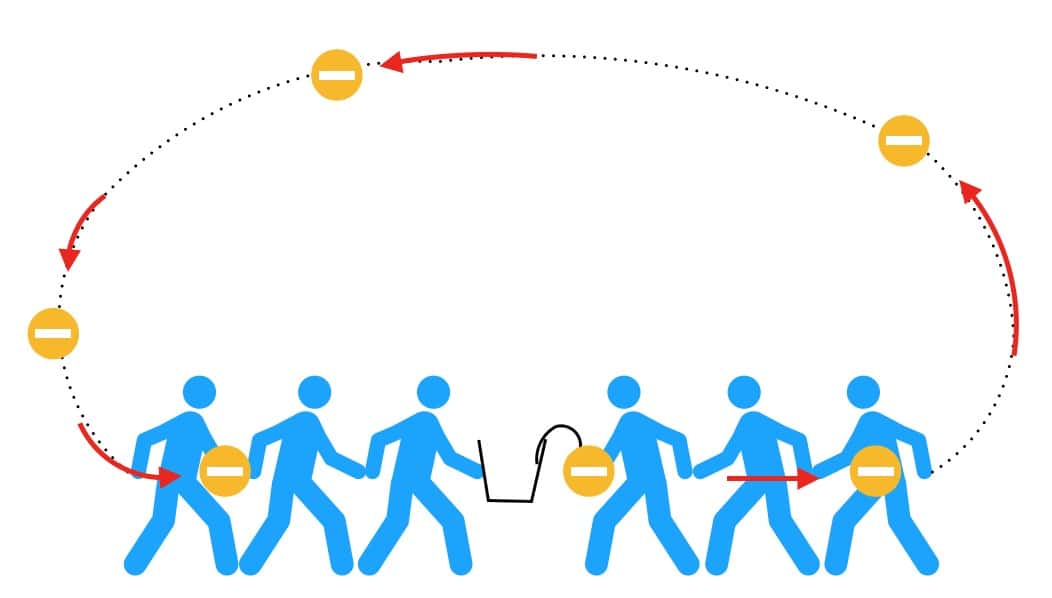

3, 2, 1…

Yikes!
This experiment is always a hit! It’s a great way to experience the flow of electricity through your body, something you don’t normally feel. Gather a large group of friends and give it a try!
Here’s a video of what happens when the experiment fails.
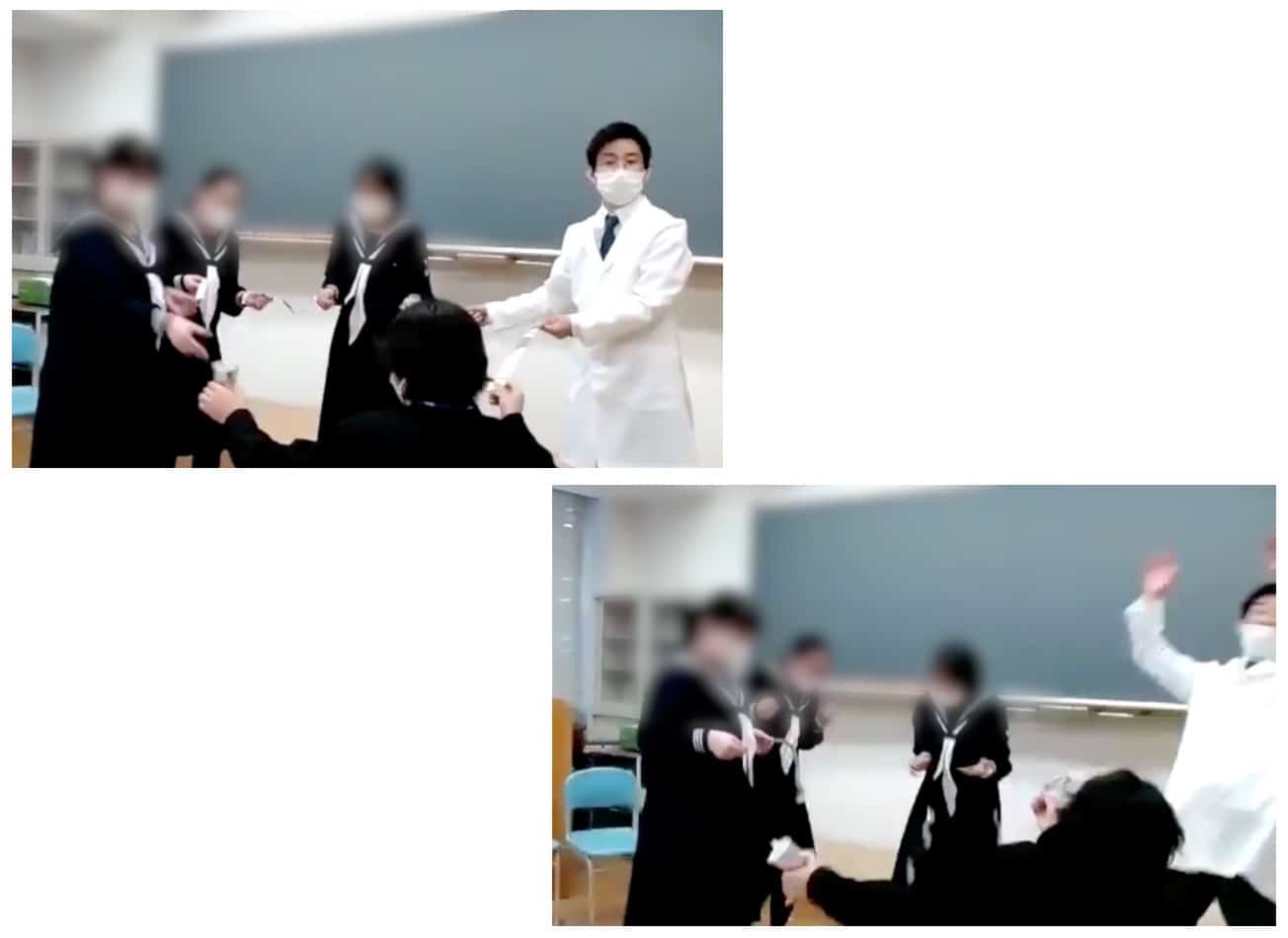
* When using a static electricity generator for this experiment, always ensure a professional is present. Please proceed with caution. For inquiries regarding static electricity experiments (workshops, TV supervision/appearances, etc.), please contact us here.
This experiment was one of the ones performed on a TV show with Suzu Hirose. Click here for more details.
【Special Feature】You’ll Get Hooked on This Static Electricity Experiment!
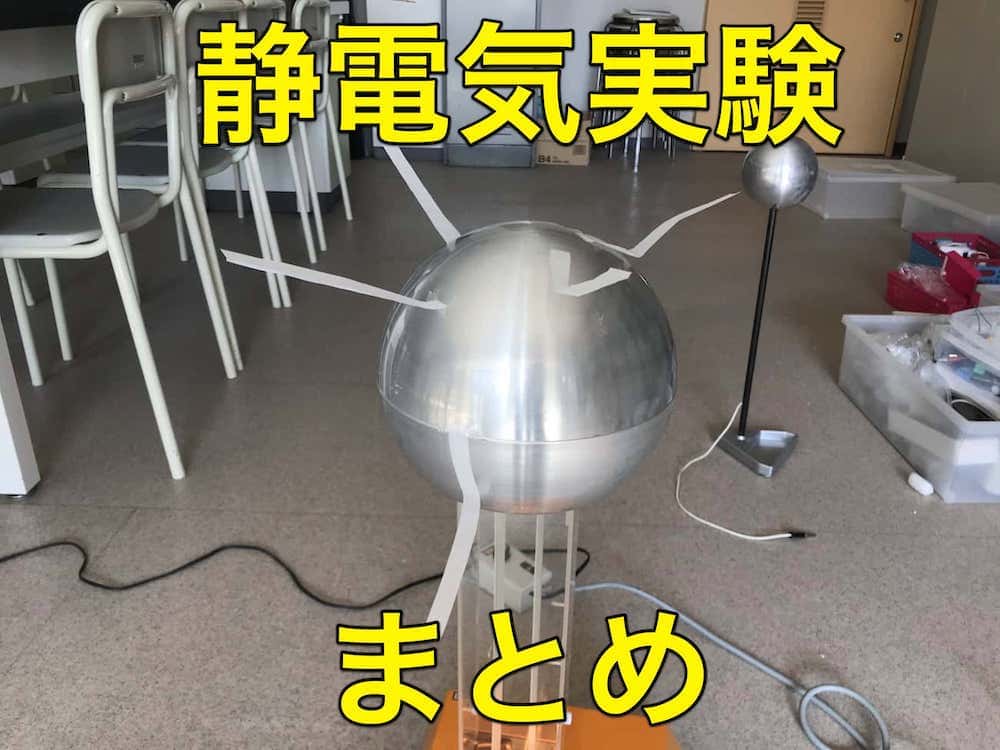 If you are concerned about safety, please check here.
If you are concerned about safety, please check here.
Also, I have summarized the historical background of #HyakuninTameshi here. Please take a look.
*1 TDK “Episode 76: The Story of Edo-Period Electromagnetic Experiments” referenced. https://www.jp.tdk.com/techmag/ninja/daa00682.htm
What is Kagaku no Netacho?
I want to share the wonder and fun of science. I’ve compiled at-home science experiments and tips on how to do them. Please feel free to search for various topics! For more information about the operator and other details, please click here, and for various requests (writing, lectures, workshops, TV supervision, etc.), please click here. Updates are shared on X.


